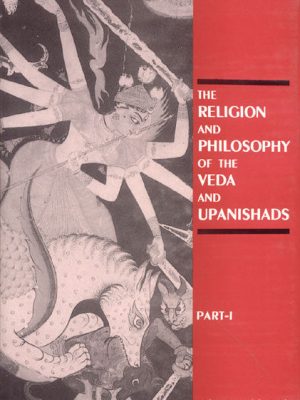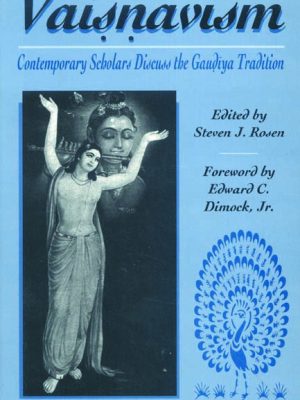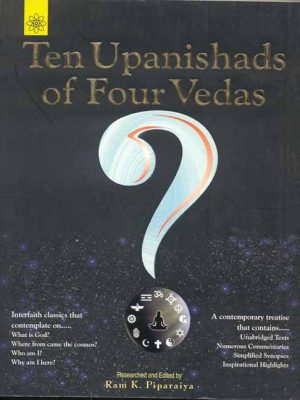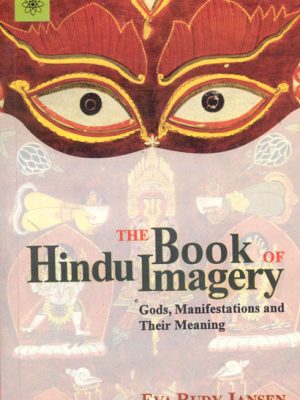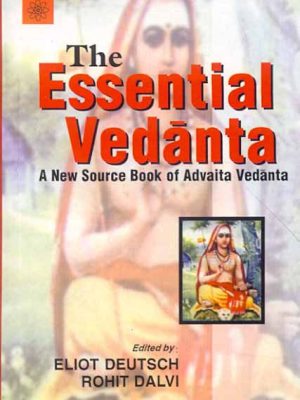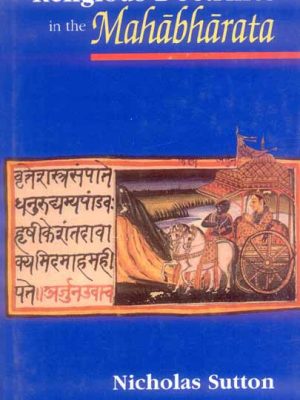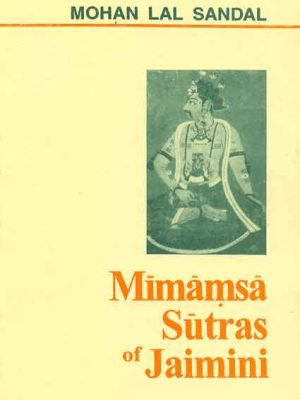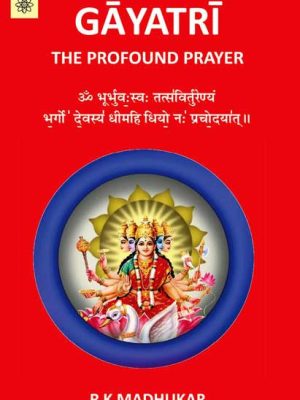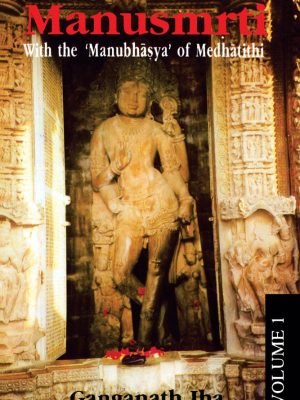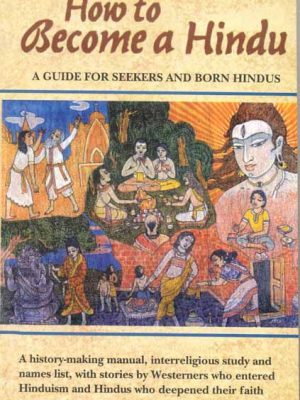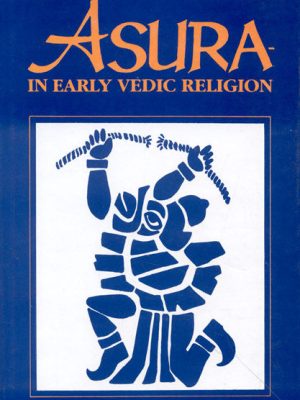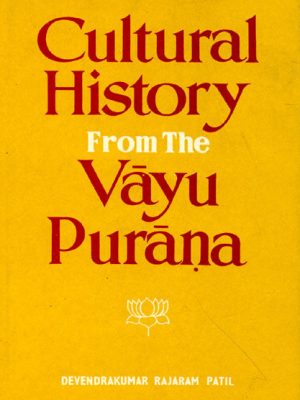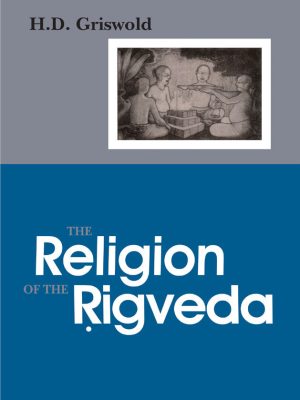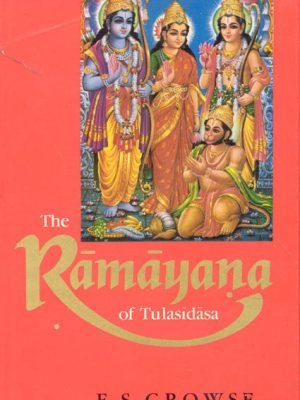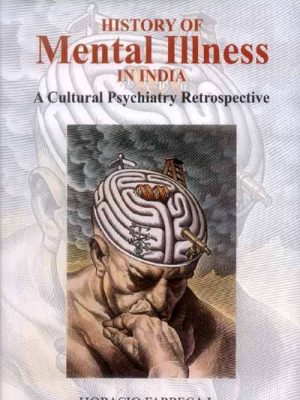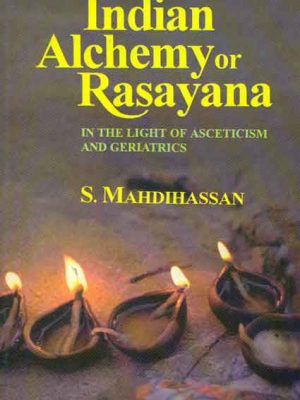Indology, History and Hinduism
-
Religion and Philosophy of the Veda and Upanishads (2 Vols.)
Religion and Philosophy of the Veda and Upanishads (2 Vols.)
This publication gives an account that is both thorough and brief of the whole of the religion and philosophy that existed in India throughout the Vedic era. Any anyone who is serious about their study of religion and philosophy will find this book to be a very helpful and comprehensive source of information. This massive effort has been undertaken with the intention of reestablishing the Vedic religion to its rightful position in the field of theological research.
About the Author(s)
Arthur Berriedale Keith
₹1,795.00 -
Vaisnavism: Contemporary Scholars Discuss the Gaudiya Tradition
Vaisnavism: Contemporary Scholars Discuss the Gaudiya Tradition
The topic of discussion in Vaisnavism: Contemporary Scholars Discuss the Gaudiya Tradition is an old religious tradition as seen through the lens of current study. Steven J. Rosen and twenty-five eminent scholars examine the different facets of Gaudiya via a series of stimulating debates in this book. VAisnavism—its
literature, historical progression, theological analysis, and religious practise. As the researchers share the knowledge they’ve acquired over the course of their years of study, thoughtful and, indeed, fascinating viewpoints emerge. This ancient East Indian tradition is brought to light through exploring topics such as the nature of the Absolute, devotional poetry, holy space, mystical states, and sound theology. These topics bring to light the rich beauty and profoundness of this tradition.
₹495.00 -
Ten Upanishads Of Four Vedas
Ten Upanishads Of Four Vedas
Ten Upanishads Of Four Vedas,Ram K.Piparaiya: A modern treatise that includes whole texts, extensive commentaries, condensed summaries, and pivotal points of inspiration. This book is a valuable compilation of the original Upanishadic writings as well as commentaries on those works. Classic works from a variety of faiths that provoke thought on. Who is God, exactly? Where did everything in the universe come from? Just who am I? Why am I in this place?
The Upanishads provide a chronicle of the human mind’s early voyages into the realm of the unknown via contemplation.
At the very least, a few centuries separated many of the nameless searchers from famous teachers and prophets such as Lao-Tzu, Confucius, Socrates, Zoroaster, Buddha, Mahavira, Abraham, and Jesus. Among the anonymous seekers were those who came before them.
In the Upanishads, the link between man, God, and the universe is illustrated via a variety of intriguing tales and metaphors.
Aphorisms are short sayings that pack a lot of wisdom into a little amount of space.
The sheer sight of Upanishads texts on a bookshelf is enough to evoke contemplation of wisdom after just a few moments of reading them.
About the Author(s)
Shri Ram Piparaiya
₹2,000.00Ten Upanishads Of Four Vedas
₹2,000.00 -
The Book of Hindu Imagery: Gods and Their Symbols
The Book of Hindu Imagery: Gods and Their Symbols
Hinduism is more than a religion; it is a way of ife that has developed over approximately 5 milennia. Its rich and multicultured history, which has no equivalent among the great religions of the world, has made the structure of its mythical and philosophical principles into a highly
differentiated maze, of which total knowledge is a practical impossibility.
This volume cannot offer a complete survey of the meaning of Hinduism, but Eva Rudy Jansen does provide an extensive compilation of important deities and their divine manifestations, so that modern students can understand the significance of the Hindu pantheon.
To facilitate easy recognition, a survey of ritual gestures, postures, attires and attributes as well as an index are included. Over 100 illustrations and several photographs make this book an important
reference, both to the student of Hindu art and the interested amateur.
About the Author(s)
EVA RUDY JANSEN
₹295.00 -
The Essential Vedanta: A New Source book of Advaita Vedanta
The Essential Vedanta: A New Source book of Advaita Vedanta
The Essential Vedanta is a comprehensive introduction to the tradition of Advaita Vedanta based upon primary sources and makes possible a study of it in its classical form. Translations from all major sanskrit writings are included as well as selections from all of the most important representatives of this central philosophy of India.
About the Author(s)
Rohit Dalvi
₹450.00 -
Religious Doctrines in the Mahabharata
Religious Doctrines in the Mahabharata
In this new edition of a classic text on the Mahabharata, the primary concepts and themes are discussed and evaluated. unique take on one of India’s best-known epics. A lot of positive feedback.
Author
Nicholas Sutton
₹795.00 -
Mimamsa Sutras of Jaimini
Mimamsa Sutras of Jaimini
One of the most important ancient Hindi philosophical writings is Jaimin’s Purva Mimamsa Sutras. Indian philosophy is based on Mimamsa, the first of the six orthodox (Dars’anas) schools. The complete work is divided into twelve adhydyces (chapters) which are further divided into sixtypadas (sections). Besides presenting conceptual explanations for the performance of Vedic rituals, the literature explains the meaning and significance of these practises in order to help readers achieve liberation, or Moksha.
According to Jaimini’s Mimamsa Sutra, all of reality is made up of material activity and the effects it produces. In the Karma-mimamsa school of thought, he and later adherents believe that there is no end to the cycle of rebirth, and that there is no freedom. Higher rebirth in the Deva realm is all that can be hoped for by Mimathsas in the endless circle of karma. It is because of this, they say, that the Vedas exist in the first place, that the primary task of a mature soul is to understand and carry out the sacrifice directives contained in the Vedas.
Author
PANDIT GANGANATHA JHA
₹495.00Mimamsa Sutras of Jaimini
₹495.00 -
Gayatri: The profound prayer
Gayatri: The profound prayer
Gayatri is a profound prayer. It is an authentic prayer that elevates, exhilarates and enlightens. According to Hindu scriptures, a prayer in its real sense is not just chanting of a few verses. It is a comprehensive exercise that involves jnana (knowledge), dhyana (meditation) and anubhava (experience). Gayatri Mahamantra is a true prayer that not only reaches out but also reaches in.
Gayatri is chanted as a Mahamantra, worshipped as the Mother Goddess and expressed as a Meter. It is not a prayer for worldly and material benefits. Gayatri is a prayer for the highest enlightenment. It is a prayer that leads to a sublime experience, a prayer that opens up our mind and vision, body and intellect to a world beyond the worldly attachments. It is a prayer that leads to the Ultimate Truth and Supreme Bliss that every enlightened human being seeks.
Gayatri, like the Vedas, is meant for the entire mankind, irrespective of gender, caste, creed, religion or nationality. It is a profound prayer that can touch and transform every human being.
This book is a good read for everyone who believes in the efficacy of prayer and meditation. It is also a good read for everyone who wishes to gain an insight into the breadth and depth of ancient Indian wisdom – the Sanathana Dharma. This informative book is meant for every generation, both young and old.
Review(s)
Gayatri-The Profound Prayer is the authorÍs first spiritual book. Writing it has been a divine spiritual experience for him. -SWAMI BALAKRISHNANANDA SARASWATHI Founder of Gayatri Tapobhoomi, Tadas, Hubli, Karnataka
Author
Madhukar
₹495.00Gayatri: The profound prayer
₹495.00 -
Moral Dilemmas in the Mahabharata
Moral Dilemmas in the Mahabharata
Here the collected papers explore the whole question of the relation between the mythopoetic and the moral in the context of the Mahabharata. Here we have a story of extreme complexity, characters that are unforgettable, and a cosmic context in which gods and men alike grapple with destiny. The obligations of kinship and friendship jostle with each other. The women characters, as in everyday life, seem to bear a very heavy load of the burden of life and to stand in a key position in almost every conflict. We are presented with predicaments at every turn. At times these predicaments seem to be aggravated by social structure. At other times they are cushioned by it. Philosophical tangles tied up with karma and dharma are interwoven with the mythopoetic material. Perhaps philosophical issues are pinpointed rather more than they are in Greek epic literature.
The essays in this book treat the Mahabharata from an unusual angle, fastening on the moral dilemmas it presents. How universal are the dilemmas faced by the characters in the story, and are the dilemmas in fact resolved? In dealing with these questions, the discussions range over the meaning of the purusarthas, the institutions of marriage and the family, the concept of action in the Gita and the special predicaments faced by Draupadi, Arjuna and others. These studies invite the scholar to reflect afresh on the text and encourage the general reader to find in epic literature much that is relevant to life today.
₹395.00 -
Manusmrti, 10 Vols.: With the ‘Manubhasya’ of Medhatithi
Manusmrti, 10 Vols.: With the ‘Manubhasya’ of Medhatithi
Ganganatha Jha’s Mualti-volume Manusmrti, originally published by the University of Calcutta between 1920 and 1939 is as indicated by its subtitle “The Laws of Manu with the Bhasya of Medhatithi”, mainly an edition and translation of the Mula text together with the explanation of the most celebrated commentator. Medhatithi’s Manubhasya has been characterized by one of the leading scholars on Dharmasastra, J. Duncan M. Derrett, as a large repertory of opinion on the meaning of the “Smrti and on some fundamental questions of Dharma and Law.”
The present work is divided into three sets, i.e. Sanskrit Text (Mula), English Translation and Notes. These comprise of two, five and three volumes-in all the ten volumes. The first two volumes are devoted to (Mula) Sanskrit Text. The first consists of first six Adhyayas and the subsequent carries next six Adhyayas from Vii to XII and a detailed Index for both volumes. The next five volumes (Vol.3 to 7) belong to English Translation. The Vol.3 carries Adhyayas I and II, Vol.4 contains Adhyayas III and IV, Vol.5 has Adhyayas V to VII, Vol 6 has Adhyaya 8, and Vol.7 has last four Adhyayas (IX to XII). All volumes contain a detailed Index. The last three volumes (8 to 10 are devoted to detailed Notes conducive to understanding the subject of the Smrti even to an interested average reader. These belong to textual, explanation and comparative respectively. These contain much useful informations
₹25,000.00 -
Upanisads: (Selections from 108 Upanisads)
Upanisads: (Selections from 108 Upanisads)
Dr. TMP Mahadevan gives here an easy to read translation of selections from the 108 Upanisads. The eternal truths revealed so long ago are still valid today, and in this easy flowing style they provide moments of truth and enlightenment in the modern materialistic world in which we now live.
The first chapter introduces the reader to the back ground of the Upanisads and elucidates the underlying philosophy. A short introduction to each of the following chapters further explains their meaning. Many sayings, known and frequently used, will be found here in their original context.
Author
T.M.P. Mahadevan
₹345.00 -
Hindu Scriptures
Hindu Scriptures
Hindu Scriptures is a unique collection of Hindu texts spanning more than
twenty centuries.
Two anthologies entitled Hindu Scriptures have previously appeared in
the Everyman series alone, that of Nicol MacNicol in 1938 and that of
Professor R.C. Zaehner in 1966. This present title is the enlarged edition
of R.C. Zaehner’s anthology, with the addition of three fresh translations,
its broad range includes arcane hymns of the ancient Aryans, a manual of
prescriptions governing every aspect of the daily life of the orthodox, and
rich poetry that describes with heady sensuality the dalliance of Krsna and
the cowherd women of Vraja in the nights of the autumn moon. The texts are
arranged in chronological order and the Introduction explains the reasons
for their inclusion, sets them in context, and briefly characterizes their
contents.
₹725.00Hindu Scriptures
₹725.00 -
How to Become a Hindu: How To Indeed A History Making Manual Presenting An
How to Become a Hindu: How To Indeed A History Making Manual Presenting An
How to Become a Hindu: How To Indeed A History Making Manual Presenting An
₹750.00 -
-
-
-
